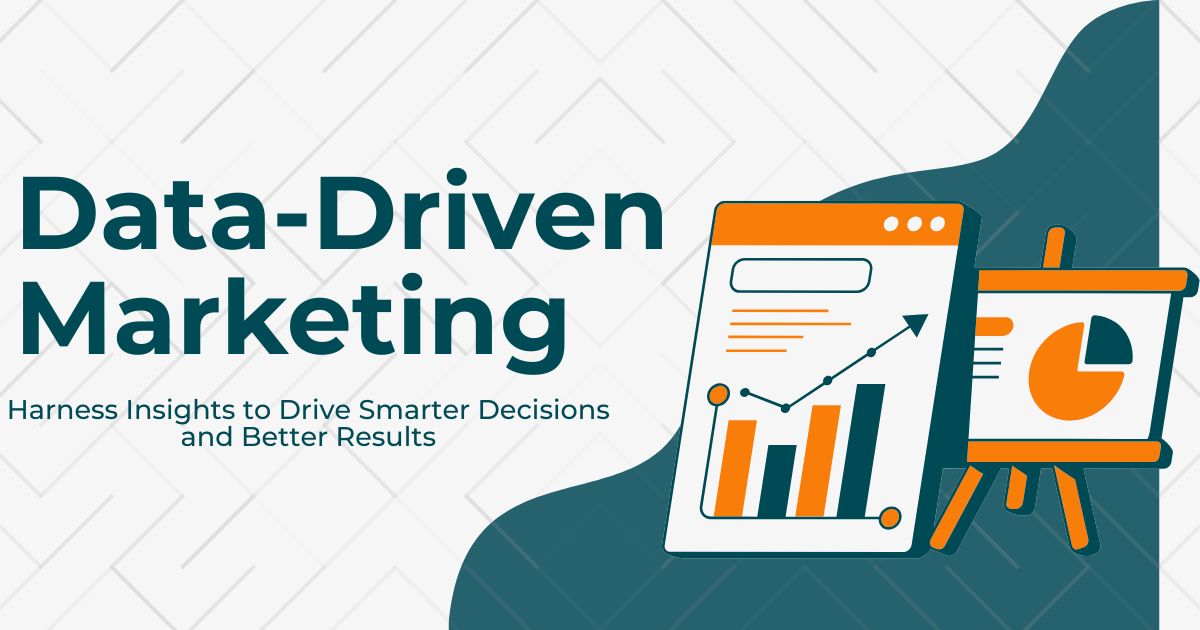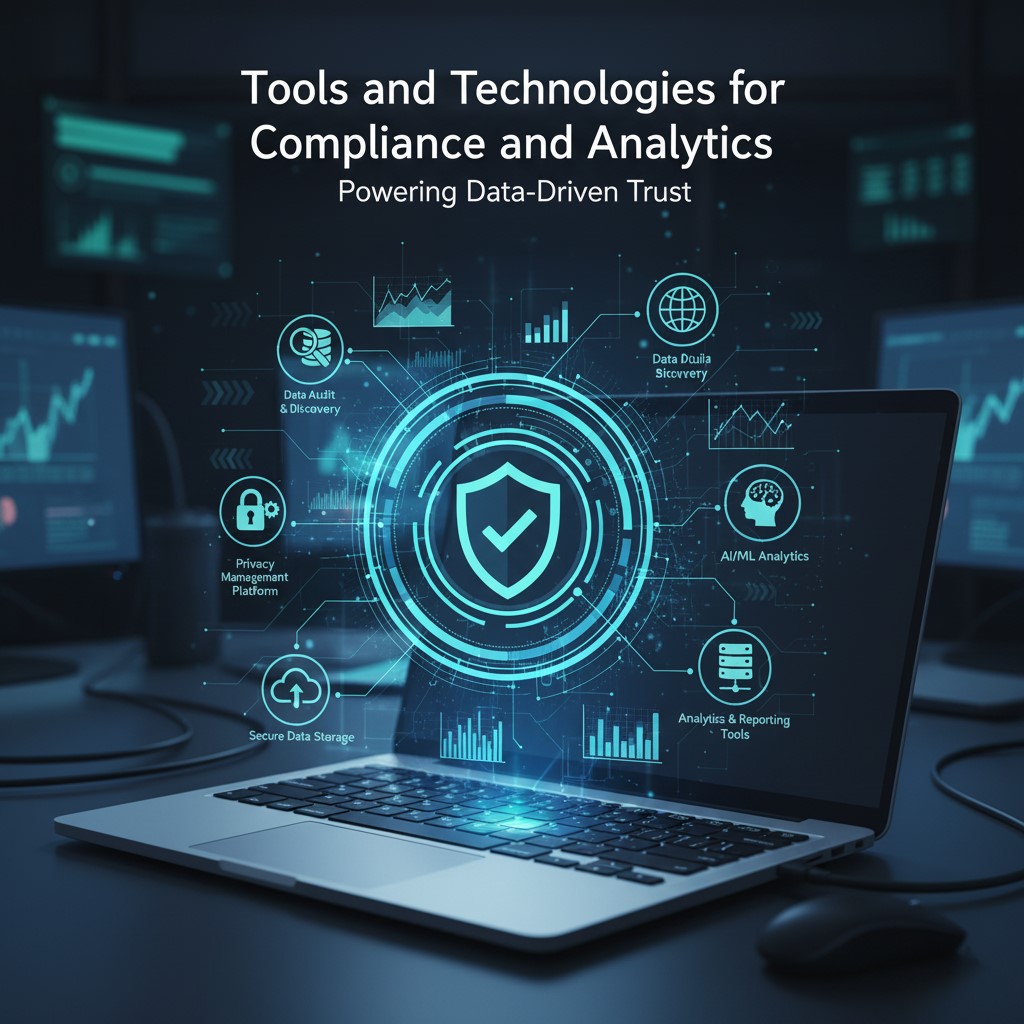
Balancing personalization and privacy is key for modern marketing. Brands that prioritize trust, ethical data use, and privacy-first tools can deliver tailored experiences while driving growth.
In today’s marketing landscape, brands rely on consumer data more than ever to craft targeted campaigns and drive meaningful engagements. However, as technology evolves and data collection expands, privacy concerns have taken center stage. Consumers are increasingly aware of how their personal information is collected, stored, and used, while regulators worldwide are imposing strict guidelines to protect consumer rights. In this evolving environment, data-driven marketers must walk a fine line between delivering personalized experiences and maintaining compliance with privacy regulations. Striking the right balance is no longer optional—it’s essential for building trust, avoiding fines, and sustaining long-term growth.
The Evolving Privacy Landscape
Data collection technologies have advanced rapidly, enabling marketers to track user behavior across websites, mobile apps, and social media platforms. At the same time, consumers have grown wary of extensive tracking and potential misuse of their data. This shift has led to three notable trends:

- Increased Consumer Awareness: News reports of data breaches and high-profile privacy scandals have sensitized users to the risks of sharing personal data.
- Emergence of Privacy Tools: Browser extensions, ad blockers, and privacy-focused browsers empower users to opt out of tracking, limiting the data available to marketers.
- Regulatory Changes: Governments have responded by introducing comprehensive privacy regulations such as Europe’s General Data Protection Regulation (GDPR) and California’s Consumer Privacy Act (CCPA).
Why Personalization Matters
Despite rising privacy concerns, consumers still expect relevant and tailored experiences. Personalization drives engagement by delivering content, offers, and recommendations that resonate with individual preferences. When executed responsibly, data-driven personalization can result in:
- Higher Conversion Rates: Targeted offers based on user behavior are more likely to convert than generic messages.
- Improved Customer Loyalty: Personalized experiences foster emotional connections, leading to repeat purchases and brand advocacy.
- Enhanced ROI: By focusing budgets on high-value segments, marketers can optimize spend and reduce wasted impressions.
Discover how data-driven marketers transform raw numbers into revenue for better results.
Key Privacy Regulations Marketers Must Know
General Data Protection Regulation (GDPR)
Implemented in 2018, GDPR regulates how brands collect, store, and process personal data of EU citizens. Key requirements include obtaining explicit consent, providing data access upon request, and ensuring proper data handling measures.
California Consumer Privacy Act (CCPA)
Effective since 2020, CCPA grants California residents the right to know what personal data is collected, to opt out of its sale, and to request deletion. Although state-specific, CCPA has set a precedent for other jurisdictions in the United States.
Other Regional Laws
Countries like Brazil, Canada, and India have introduced or updated privacy regulations. ePrivacy, a pending EU directive, aims to regulate electronic communications and further enhance user consent requirements.
For guidance on compliance and strategy, explore how to build a data-driven marketing strategy.
Strategies to Balance Privacy and Personalization
- Adopt a Privacy-First Mindset: Build data collection and personalization strategies around user consent. Clearly communicate how data will be used and allow users to opt in or out at any time.
- Implement Data Minimization: Collect only the data that is necessary for your marketing objectives. This reduces risk in case of a breach and aligns with regulatory principles.
- Use Pseudonymization and Anonymization: Where possible, de-identify user data so that it cannot be traced back to specific individuals, while still enabling aggregate analysis and personalized insights.
- Leverage First-Party Data: Prioritize direct interactions—such as email subscriptions, loyalty programs, and on-site behaviors—to build robust first-party data pools that are more reliable and compliant.
- Deploy Consent Management Platforms (CMPs): Use CMPs to track and store user preferences, ensuring that cookies and tracking scripts are only activated after consent is granted.
- Regular Audits and Compliance Checks: Conduct periodic reviews of data flows, storage practices, and third-party integrations to ensure ongoing alignment with evolving regulations.
- Educate Your Team: Train marketing and IT teams on privacy best practices and the legal implications of non-compliance.
Learn more about using data-driven marketing for better results.
Tools and Technologies for Compliance and Analytics
Modern marketers have access to a range of solutions that support both personalization and privacy. Some of the most impactful tools include:

- Customer Data Platforms (CDPs): Centralize first-party data, manage consent preferences, and unify customer profiles across channels while adhering to compliance rules.
- Consent Management Platforms (CMPs): Automate the collection and storage of user consents, ensuring that tracking is paused until consent is granted.
- Data Governance Tools: Monitor data lineage, manage user access, and enforce policies around data retention and deletion.
- Privacy-Focused Analytics: Solutions that provide aggregated insights without exposing individual user identities, such as differential privacy models.
You can explore the advantages of using data-driven marketing to maximize these tools.
Case Studies: Success Stories
Case Study 1: International Retailer
An online retailer operating in the EU revamped its data collection process by introducing granular consent options during checkout. By being transparent about data usage, they achieved a 30% increase in opt-in rates and a 20% uplift in personalized email revenue, all while maintaining full GDPR compliance.
Case Study 2: Financial Services Firm
A global bank implemented a CDP combined with machine learning models that leveraged anonymized user behavior to recommend financial products. The firm saw a 15% boost in cross-sell conversions and reduced its data storage footprint by 40% through data minimization practices.
Future Outlook: Privacy-Preserving Personalization
Looking ahead, marketers will increasingly adopt privacy-preserving techniques such as federated learning and homomorphic encryption. Federated learning enables algorithms to train on decentralized data sources—like user devices—without moving raw data to central servers. Homomorphic encryption allows computations on encrypted data, ensuring that personal information remains confidential throughout processing. As these technologies mature, marketers will be able to deliver hyper-personalized experiences with minimal privacy trade-offs.
Privacy-preserving techniques like federated learning and homomorphic encryption will allow marketers to deliver hyper-personalized experiences with minimal privacy trade-offs. Businesses can also benefit from automate web data entry to save hours weekly for cleaner datasets.

The Role of Trust in Data-Driven Marketing
Beyond regulatory compliance, trust has become a currency in the digital marketing landscape. Consumers are more willing to share personal information with brands they perceive as transparent, responsible, and secure. Trust is not built overnight; it requires consistent practices that show users their privacy is respected at every touchpoint.
Transparency in data practices—such as clear privacy policies, easy-to-understand consent forms, and visible explanations of how user data enhances their experience—can significantly increase engagement. Brands that fail to prioritize trust risk losing not only potential customers but also long-term loyalty and reputation in an increasingly privacy-conscious market.
The Intersection of AI and Privacy
Artificial intelligence (AI) and machine learning (ML) are revolutionizing personalization, enabling marketers to predict consumer behavior, recommend products, and optimize campaigns in real time. However, AI also presents new privacy challenges, particularly when models rely on large datasets containing personal information.
To mitigate risks, privacy-preserving AI techniques are gaining traction. Methods like federated learning allow AI models to be trained directly on user devices without transferring sensitive data to central servers. Similarly, differential privacy and homomorphic encryption enable insights to be extracted from datasets while keeping individual information secure. As these technologies mature, marketers can achieve high levels of personalization while adhering to strict privacy standards.
Ethical Considerations in Data Usage
Ethics in marketing goes beyond regulatory compliance. Responsible data use involves asking critical questions about what data is collected, how it is applied, and whether it genuinely benefits the consumer. Ethical marketing practices help brands avoid manipulation and invasive targeting, ensuring campaigns enhance user experience rather than exploit vulnerabilities.
For example, a campaign that uses purchase history to recommend complementary products is considered ethical and beneficial. In contrast, leveraging sensitive behavioral data to pressure users into impulsive buying may lead to distrust and reputational damage. Embedding ethical guidelines into marketing strategies is essential for long-term sustainability and consumer loyalty.
Integrating Privacy into Marketing Strategy
Privacy should not be an afterthought—it must be embedded in the core of every marketing initiative. Successful privacy integration involves:
-
Designing campaigns that prioritize consent and transparency from the start.
-
Using data insights to enhance value for users rather than merely drive sales.
-
Collaborating with IT and legal teams to ensure technology and messaging are compliant.
-
Continuously monitoring emerging regulations and privacy trends to remain proactive.
This approach allows marketers to turn compliance into a competitive advantage, demonstrating respect for consumer rights while delivering engaging experiences.
The Future of Data-Driven Marketing in a Privacy-First World
Looking ahead, privacy-first marketing is likely to become the standard, rather than the exception. Consumers will increasingly favor brands that demonstrate accountability in data handling, and regulatory frameworks are expected to grow stricter and more globalized.
Technologies like AI-powered consent management, privacy-preserving analytics, and advanced anonymization will play a critical role in bridging the gap between personalization and privacy. By adopting these solutions early, brands can maintain agility, build consumer trust, and remain competitive in a marketplace where privacy is paramount.
Leveraging Consumer Education for Better Engagement

A key yet often overlooked aspect of privacy-first marketing is educating consumers about how their data is used. When users understand the benefits of sharing certain information—like receiving personalized offers, faster service, or relevant content—they are more likely to opt in.
Brands can implement strategies such as clear tooltips, interactive privacy dashboards, and short educational videos explaining data practices. By demystifying data usage, marketers not only increase opt-in rates but also strengthen trust. In essence, educated consumers feel empowered and are more willing to engage with personalized marketing initiatives, creating a mutually beneficial relationship.
Collaborative Ecosystems: Working with Partners and Vendors
Data-driven marketing often involves multiple partners, from analytics providers to ad networks and CRM platforms. In this interconnected ecosystem, privacy compliance is a shared responsibility.
Brands should establish strict vendor management protocols, including privacy audits, contractual obligations for compliance, and real-time monitoring of third-party data practices. Sharing data responsibly with trusted partners ensures campaigns remain effective without compromising user privacy. This collaborative approach also mitigates risks associated with third-party breaches and reinforces brand credibility in a privacy-conscious market.
Measuring the ROI of Privacy-First Marketing
Investing in privacy-first strategies is not just about compliance—it can directly impact business outcomes. Brands that prioritize ethical data practices often see measurable improvements in customer engagement, conversion rates, and long-term loyalty.
For example, marketers can track opt-in rates, user interactions with personalized campaigns, and retention metrics to gauge the effectiveness of privacy-conscious strategies. By integrating privacy considerations into performance measurement, organizations can demonstrate that respecting consumer data and driving business growth are not mutually exclusive—they reinforce each other.
Conclusion
Data-driven marketing and privacy compliance are not mutually exclusive. By embracing a privacy-first approach, leveraging appropriate tools, and maintaining transparent practices, brands can deliver powerful personalized experiences while respecting consumer rights. In doing so, they build trust, mitigate legal risks, and unlock sustainable growth in an era defined by privacy expectations.
Frequently Asked Questions (FAQ)
How can brands balance personalization with privacy regulations?
Brands can achieve balance by adopting a privacy-first mindset, leveraging first-party data, and ensuring transparency in data collection. Using consent management platforms (CMPs) and privacy-preserving analytics helps deliver relevant experiences without violating regulations.
What is the difference between first-party and third-party data?
First-party data is information collected directly from users through interactions with your brand, such as website visits or loyalty programs. Third-party data is acquired from external sources, often aggregated from multiple platforms, and may carry higher privacy risks. Prioritizing first-party data ensures better compliance and reliability.
What are some examples of privacy-preserving technologies in marketing?
Key technologies include federated learning (training AI models on decentralized devices), homomorphic encryption (processing encrypted data), and differential privacy (analyzing datasets while hiding individual identities). These methods allow personalization without compromising user privacy.
How do GDPR and CCPA differ in their approach to consumer data?
GDPR applies to EU citizens and focuses on explicit consent, data access, and portability, with strict global applicability for businesses dealing with EU residents. CCPA applies to California residents and emphasizes the right to know, opt out of data sale, and request deletion. Both frameworks aim to empower consumers but differ in scope and enforcement.
Why is consumer trust critical in data-driven marketing?
Trust determines whether users are willing to share personal information. Brands that consistently demonstrate transparency, security, and responsible data use are more likely to foster loyalty, engagement, and long-term revenue. Without trust, even the most sophisticated personalization strategies can fail.
How can small businesses implement privacy-first strategies without significant resources?
Small businesses can focus on clear consent mechanisms, collect only necessary data, leverage first-party data, and use affordable CMPs or privacy-focused analytics tools. Even incremental steps toward transparency and data minimization can have a substantial impact on compliance and customer trust.
What role does ethics play in marketing data usage?
Ethical marketing ensures that data is used to genuinely benefit consumers, rather than manipulate behavior or exploit sensitive information. Ethical practices help build long-term loyalty, reduce reputational risk, and align marketing strategies with societal expectations.
Leave a Reply